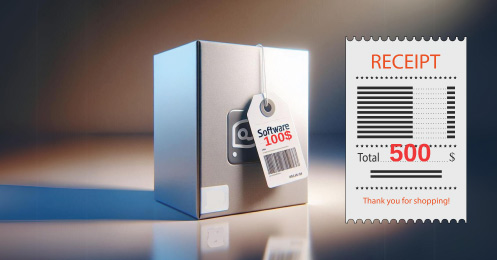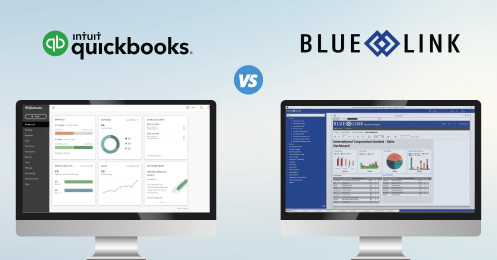We’ve all experienced fear at one point or another. Whether it’s fear of failure, fear of the unknown, fear of letting go of what’s familiar to us…these emotions can often cloud our judgment and can result in a lot of missed opportunities. It comes as no surprise that businesses often feel these paralyzing emotions when faced with the decision to replace their long-time warehouse inventory software. Many become so overwhelmed with feelings of uncertainty and doubt that they end up abandoning their software search altogether, and decide to stick with their existing software rather than exploring the advantages and benefits that come with a more robust system.
So, how do businesses overcome this anxiety and pull the trigger on acquiring new technology that can put their business in the fast lane? First, businesses need to assess their level of commitment to the search and ask themselves “Do I want to actively look for new warehouse inventory software?” Many businesses go on the hunt for a new solution out of sheer frustration over the shortcomings of their existing system, however, when it comes to making an actual decision, they become hesitant and afraid of getting into unfamiliar territory. Acquiring new software needs to have a high place on the priority scale - if not, the search will result in a waste of time and resources.
Once you have made a commitment to actively look for new software, take the time to identify your fears and get down to the root of what’s causing them. Here are a few common ones.
I don't want to go over budget!
Are you thinking of a dollar amount in your head that you are determined not to surpass? How did you come up with that number? Many businesses base their budget of an arbitrary number without taking into consideration any real-world information. That is why many companies experience sticker shock as soon as the first vendor provides pricing. To avoid a full halt in the search over pricing, businesses need to understand what they’re comparing the costs with. Are you comparing the cost with that of an outdated legacy software or introductory software? These types of systems cost much different than more modern and robust warehouse inventory software due to differences in technology and features.
Another question for businesses to ask is “What is the cost of doing nothing?” Not purchasing software can end up being more of a headache in the long-run, and there are often costs associated with not making a change, such as:
- Having to hire new employees to handle tasks not managed with existing systems.
- Missing the opportunity to increase automation through additional functionality such as advanced accounting, barcode scanning, and lot tracking features.
- Missing the opportunity to grow the business through new sales channels (such as eCommerce).
What if I choose the wrong vendor?
A common mistake that warehouse inventory software seekers frequently make is evaluating too many vendors out of fear of choosing the wrong one. Trying to evaluate too many quickly becomes overwhelming as employees try to absorb a sea of information- having to remember and distinguish between too many conversations and demos often results in making the wrong decision or no decision at all. The key is to keep in mind that it is very unlikely that a vendor can meet 100% of your needs, so if you find a vendor that can address the majority of your needs (about 80%), stop looking.
The right vendor will not only spend time discussing their product with you but will also dedicate time to get to know your business and current processes to identify potential areas of improvement. A good vendor will also let you know if there are any areas of the software where it is not a good fit to avoid wasting your time. They are not afraid to say no and have tested methodology behind their sales process to ensure a true fit, which makes it important to cooperate and provide clear answers to their questions throughout the different stages of the sales process.
Will I lose my existing data?!
Does the thought of losing historical and current information send a chill up your spine? You're not alone. One of the main anxieties businesses face when deciding to transition to new warehouse inventory software is the fear of losing their existing data living in their current system. Many are simply unaware that depending on the vendor, data migration services will be available to ensure that your information is securely transferred to your new database. The right vendor will collaborate with you to understand what data needs to be moved over, when data will be migrated, and advise you if any data needs to be cleaned up during the migration process.
Will employees be able to learn a new system?
For those who fear unknown functionality that comes with a new warehouse inventory system, breathe a sigh of relief knowing that many vendors offer training as a part of their service package. Make sure you select a vendor that has a team of qualified consultants to provide training on applicable functionality and how your team can use new features efficiently in their day-to-day operations. The best way to determine the quality of training offered by each vendor is to speak to their existing customers to gain insight into a collection of first-hand experiences.
And, think of it this way... you don’t need to know 100% of the software features included. Don’t try to wrap your head around every bell and whistle all at once- instead, focus on the core features that will help you achieve the majority of your tasks. Once you get the hang of these features, you can explore more complex features or optional components.
What if the implementation fails?
Chances are, you've probably read a few horror stories out there of failed software implementations. Although there is no guarantee that this won't be the case during your implementation, speaking with a vendor's existing custom base will help you get a feel for how often there have been implementation issues. Inevitably there will be something that goes wrong during the implementation, and so the key is to ask this question of existing customers to better understand how the vendor dealt with any issues. Keep in mind that implementations are a two-way street and require collaboration between both parties. Two things you can do as a customer to assist in the success of the implementation are:
- Be transparent about your business processes- if your business is unable or unwilling to educate the vendor on specific business operations and processes, you will most likely get a more generic installation, one that might not improve operating inefficiencies as hoped.
- Ensure you allocate the appropriate resources (including people with the authority to make decisions) to the project, and take direction from the vendor on implementation tasks.
Remember, the intention behind new technology is always to solve problems not create them- the right solution will make your life easier. Don't put yourself in a position where you will regret or wonder what could have been if you had transitioned to a more robust warehouse inventory system. Be brave, be open to change and move forward in your software search with confidence.











